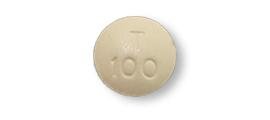Thiamine Dosage
Medically reviewed by Drugs.com. Last updated on Nov 23, 2023.
Applies to the following strengths: 100 mg/mL; 100 mg; 50 mg; 250 mg; 500 mg
Usual Adult Dose for:
Usual Pediatric Dose for:
Additional dosage information:
Usual Adult Dose for Beriberi
10 to 20 mg IM three times daily for up to 2 weeks. Thereafter, use an oral therapeutic multivitamin preparation containing 5 to 10 mg thiamine daily for one month. A complete and balanced diet should follow.
Neuritis of pregnancy:
If vomiting severe to preclude oral therapy, give 5 to 10 mg IM daily.
'Wet' with myocardial failure:
Treat as an emergency cardiac condition. Thiamine is administered slowly by the IV route.
Usual Adult Dose for Thiamine Deficiency
If dextrose administered: to patients with marginal thiamine status, give 100 mg in each of the first few liters of IV fluid to avoid precipitating heart failure.
Usual Adult Dose for Vitamin/Mineral Supplementation
50 to 100 mg orally once a day
Usual Adult Dose for Wernicke's Encephalopathy
100 mg IV as an initial dose followed by 50 to 100 mg/day IM or IV until the patient is on a regular, balanced, diet.
Usual Pediatric Dose for Beriberi
10 to 25 mg IM or IV daily (if critically ill), or 10 to 50 mg orally every day for 2 weeks, then 5 to 10 mg orally daily for 1 month. If collapse occurs: 25 mg IV. Administer with caution.
Usual Pediatric Dose for Thiamine Deficiency
If dextrose administered: to patients with marginal thiamine status, give 100 mg in each of the first few liters of IV fluid to avoid precipitating heart failure.
Usual Pediatric Dose for Vitamin/Mineral Supplementation
Infants: 0.3 to 0.5 mg orally once a day; children: 0.5 to 1 mg orally once a day.
Renal Dose Adjustments
Data not available
Liver Dose Adjustments
Data not available
Dose Adjustments
If hypersensitivity to thiamine is suspected, administer a skin test: one-hundredth of the dose intradermally and observe patient for at least 30 minutes. If no reaction occurs, full dose can be administered.
Precautions
Serious hypersensitivity/anaphylactic reactions have been reported, especially after repeated administration. A skin test should be performed on patients who are suspected of drug allergies or previous reactions to thiamine, and any positive responders should not receive thiamine by injection.
Deaths have been reported after the use of IV or IM administration of thiamine.
Thiamine injection contains aluminum. Toxic levels of aluminum may occur if prolonged parenteral administration is used in patients with kidney impairment.
Dialysis
Data not available
Other Comments
Oral thiamine may be given with or without food.
Parenteral thiamine should be administered IM or by slow IV injection.
Dietary sources of thiamine include pork, beef, whole grains, yeast , fresh vegetables and legumes.
Recommended Dietary Allowances (RDA) in Adults:
Males: 1.2 mg daily
Female: 1.1 mg daily
Recommended Daily Allowance (RDA) in Pediatrics:
1 to 3 years: 0.5 mg/day
4 to 8 years: 0.6 mg/day
9 to 13 years: 0.9 mg/day
Males -14 to 18 years: 1.2 mg/day
Females - 14 to 18 years: 1.0 mg/day
Average Adequate Intake (AI) for healthy breast-fed infants:
0 to 6 months: 0.2 mg/day
7 to 12 months: 0.3 mg/day
More about thiamine
- Check interactions
- Compare alternatives
- Pricing & coupons
- Reviews (1)
- Drug images
- Side effects
- During pregnancy
- Drug class: vitamins
- En español
Patient resources
- Thiamine drug information
- Thiamine (Advanced Reading)
- Thiamine (Vitamin B1) Capsules and Tablets
- Thiamine (Vitamin B1) Injection
Other brands
Professional resources
Related treatment guides
Further information
Always consult your healthcare provider to ensure the information displayed on this page applies to your personal circumstances.


